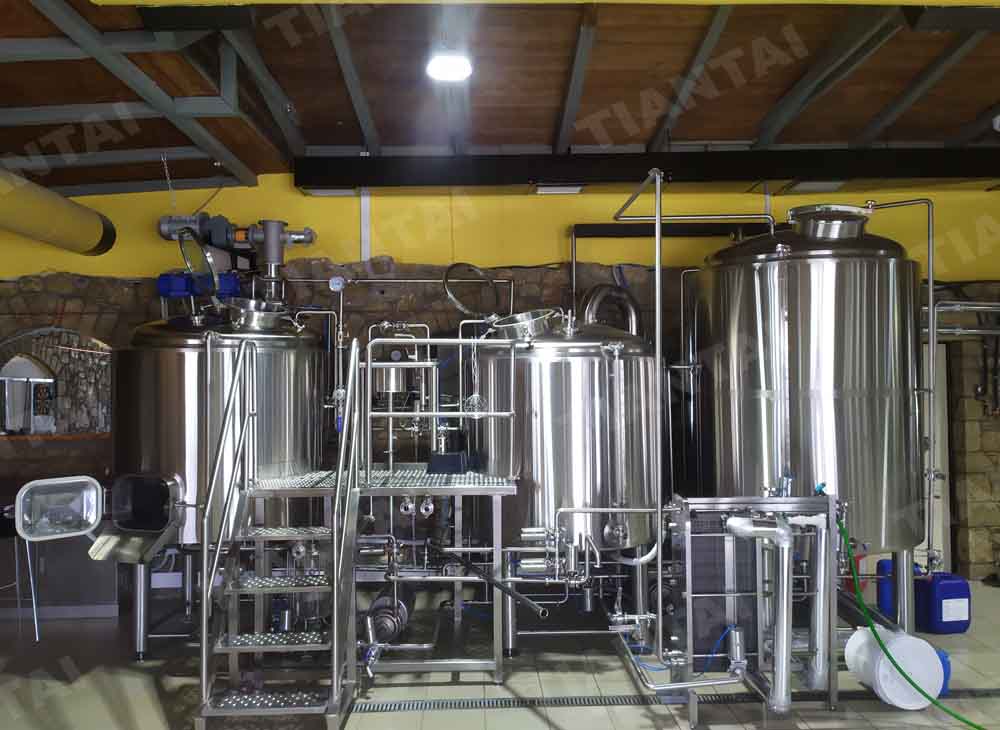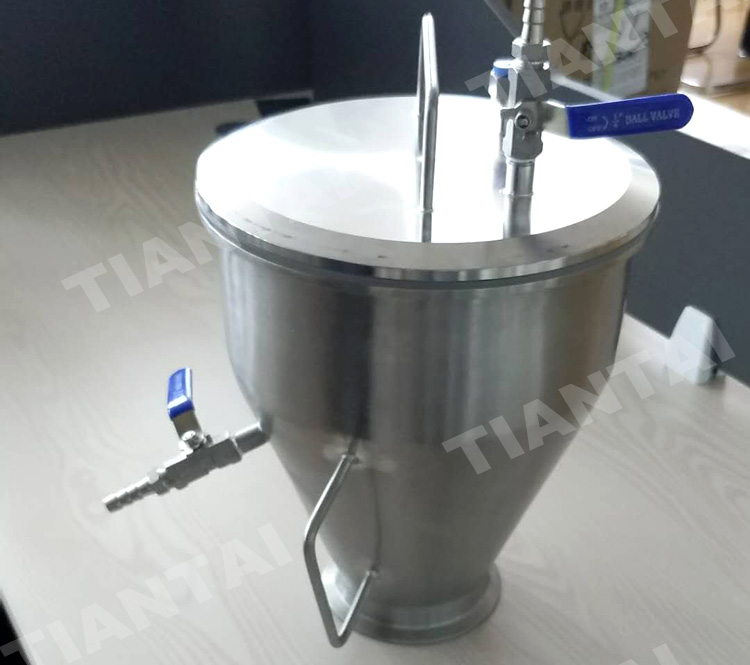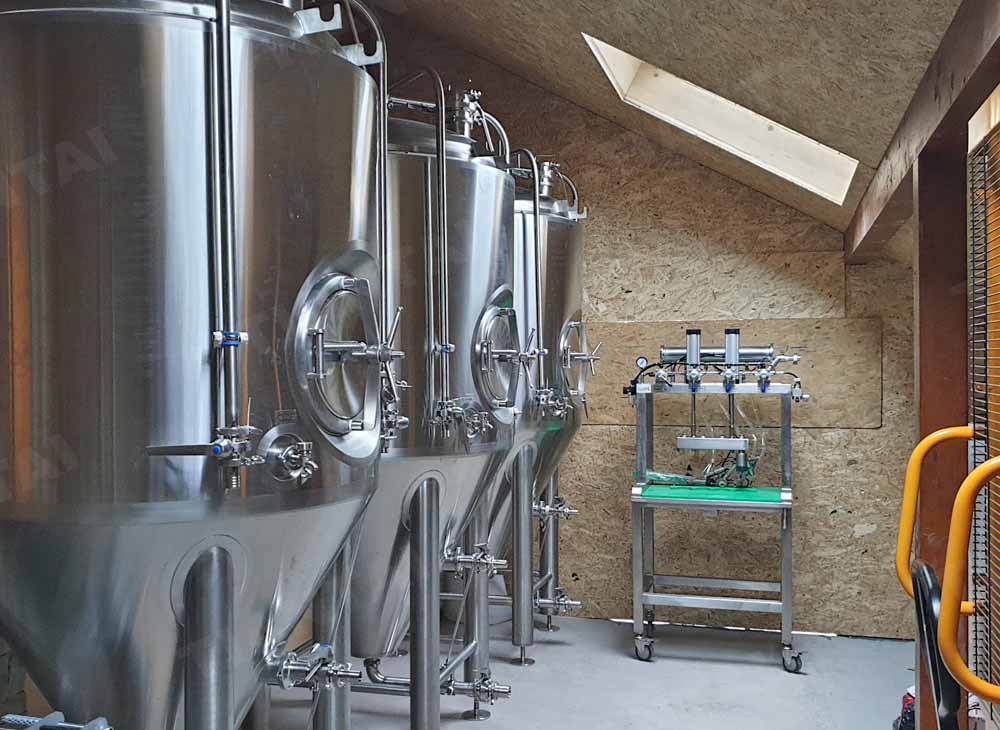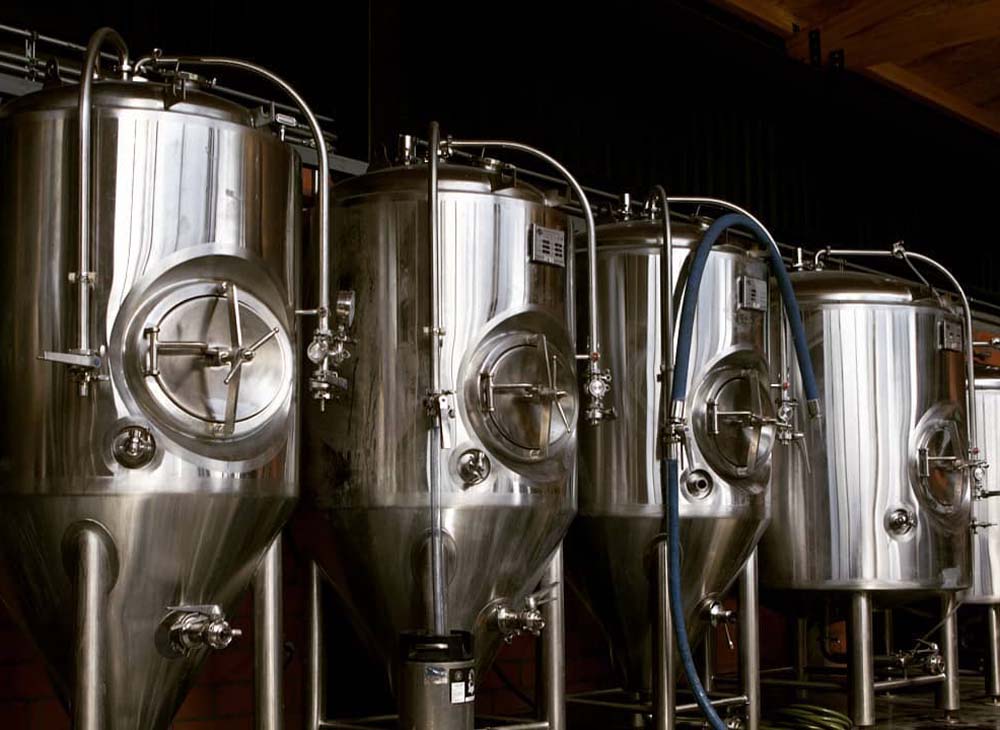How to Start a Brewery and find beer brewing equipment
- Jul 14, 2021
- 154
- tiantai
The humble brewery has evolved into a very successful commercial industry, and craft breweries only continue to rise in popularity as they attract more sales and visitors each year.
With the world of craft beer thriving, the opportunity is ripe for starting something of your own. But where do you begin when figuring out how to start a brewery? How to buy brewing equipment? Especially for the commercial beer brewing system or commercial brewery equipment, it needs to consider a lot of factors.
WHAT WE’LL COVER:
Chapter 1: Basics of Planning a New Craft Brewery
Chapter 2: Cost of Opening a Brewery
Chapter 3: Creating a Brand: Your Brewery’s Name & Logo Design
Chapter 4: Brewery Business Plan
Chapter 5: Brewery Equipment
Chapter 6: Legal & Insurance
Chapter 7: Financial Forecasts


1. Basics of Planning Your New Brewery
When it comes to starting your own business, it can be a long process that requires a lot of time and investment. But the rewards are definitely worth the sweat and tears! Opening a brewery will, without a doubt, be one of the most thrilling and terrifying experiences you’ll ever go through. But the good news is that you’re not the first to feel this way while staring down at all the choices you get – and have to – make. With the right resources, skills, and support from people who have been there, your journey will not only be successful but so worth it.
The six major components of planning a new brewery are:
Determine the startup cost of opening a brewery
Decide on a brewery name, logo, and layout
Create a business plan
Buy all equipment needed for your operations
Legal requirements
Creating financial forecasts
Figuring out how to start a brewery successfully is all about the right balance between having a solid plan in place before you start, and allowing yourself enough flexibility to modify or pivot the plan as you move along. Whether you’re at the very beginning of researching how to write a business plan or just about to launch, this article will provide you with the basics of what you need to know when opening a brewery.
2. How Much Does It Cost to Start a Brewery?
Generally, most breweries range from $500,000 to $1 million in start-up costs. The cost of starting a brewery however, can depend on how big you plan your brewery to be, production levels, and location.
One of the biggest challenges you’ll face when opening a brewery is dealing with hidden fees and expenses that pop up. Expenses can generally be grouped into two categories: major expenses and smaller expenses.
Major Expenses
Small Expenses
Rental fees or building cost
Utilities
Ingredient costs
Staff salaries
If you’re a first-time brewer and not sure if you can acquire enough funding for the project, starting a microbrewery can also be a good alternative.
Starting a microbrewery can have its advantages for beginners who are just starting out in the craft beer industry, as microbreweries don’t have the consequential expenses that a full-scale brewery would require. While microbreweries can still be costly, they’re generally more attainable as opposed to large-production craft breweries. Get brewery tips & tricks directly to your inbox
3. Creating a Brand for Your Brewery
You don’t necessarily have to be a graphic designer in order to know what the design of a standard craft brewery should look like. Whether you’ve ever been to a craft brewery or not, you probably already have an idea of the overall aesthetic and themes adopted by many breweries nowadays. Craft beers have come a long way in their branding and expressing the personality of its products, which leads to strong customer loyalty and return visitors. Here are some tips on how to express your brewery brand.
How to Choose a Name for Your Craft Brewery
A good name can be the launching pad for a truly memorable brand and give customers a great first impression of your brewery. It has the ability to capture the imagination of your customers and connect with them in a way that resonates. Have a good think about it—you definitely want to try and get it right the first time versus having to go through a costly renaming process further down the road.
Eight characteristics to keep in mind when brainstorming a brewery name are:
Meaningful: Communicates the essence of your brand, supports the image you want to convey
Distinctive: Unique from your competitors yet easy to remember, spell, and pronounce
Scalable: Adaptable as the brewery grows and/or changes in marketing or product direction
Protectable: Can be owned, trademarked, and the domain name and social media handles are available
Visual: Well-suited to graphic presentation (logo, packaging design, etc.)
Persuasive: Encourages customers to emotionally engage with your brand
Emotional: Evokes an emotional response from your customers
Discoverable: Should be easy to search for online
How to Design Your Brewery's Logo
As the craft beer industry continues to grow, this increases the number of competitors around you. You want to stand out, but still be easily identified as a craft brewery.
Look to the name you choose for inspiration when designing your brewery logo. The two need to align for the branding to be understood by customers.
With beer having been around since the dawn of man, many these days are going for a look that brings a nostalgia-feeling to beer drinkers. You can never go wrong with an antique woodcut-style and rustic theme! Giving your design a traditional look can be quite fitting when it comes to craft beer.
For inspiration, here are some of the most iconic brewery logos. Many of these designs feature an old-fashioned, yet classic, look that gives a welcoming feeling to make beer-drinkers feel like they’re right at home.When designing your logo, keep in mind iconic symbols and elements that tend to represent the art of craft beer.
Iconic design elements found in popular craft beer logos:
Hops
Wooden barrels
Emblems and badges
Stylized animals/characters (eg. A wolf)
Any icon that can be seen as vintage or old-fashioned
Take your time. Designing the perfect logo for your brewery needs some thought because it’s such an impactful element of your branding identity, being seen across your brewery website, taproom, merchandise, and equipment such as your growlers.
How to Your Brewery's Color Scheme
Your color scheme is also important to consider, as colors have a great effect on the type of vibe your customers get when they experience your brand.
Consider sticking with colors that are natural and dark, with a splash of bold color. For example, a nice combination of colors could be a dark yellow, black, and a vibrant red.
How to Choose a Location for Your Taproom
If you’re starting a brewery, the location and size of the building are also major factors to consider during the selection process.
Check your state’s laws and regulations of where breweries can be operated and do your market research on which areas breweries will be most suitable for your business. The location you choose will determine important elements of your business plan, such as your competitive analysis and venue type.
For the best location, answer the following questions and consider the effects they will have on your business:
Attraction: Which features of the neighborhood will affect your brewery?
Competition: What other breweries or related businesses are located in the area
Demographics: What kinds of people live, work, or visit the neighborhood?
How to Design Your Brewery's Floor Plan & Layout
A valuable tip to keep in mind is to choose a location that provides room to grow. Chances are you’ll eventually want to expand your business and the costs involved in moving to a larger location will have a big impact on your bottom line. Leverage existing restaurant floor plan layout designs as inspiration when designing your taprooms layout.
For the best building design layout, a few questions to ask yourself include:
Do you need a taproom?
Is the brewery the only location where you’ll be brewing beer?
How much space is required for the brewery itself vs. customer seating?
How many guests are you aiming to have in the building at a time?
4. How to Structure a Brewery Business Plan
A brewery business plan is an important tool that you will need to create at the beginning of starting a brewery. Especially if you’re planning on raising startup capital by pitching to investors or lenders, make sure your brewery business plan is ready because in case they ask to see it.
Below are the nine most essential parts to include in your business plan:
Executive Summary: This section is the most important part of your business plan and should be no longer than one page. The purpose is to summarize the main points of the plan.
Business Overview: This section should include a list of basic information about your business, such as legal name, address, and contact details.
Business Description: This section specifies your vision and goals for the brewery. It should also include details on the structure, mission statement, concept, and location
Market Analysis: This section states relevant statistics about past and current trends within your targeted marketplace. It includes anything that relates to the demand for a brewery.
Consumer Analysis: This section details statistics about your target audience and customer segments using qualitative and quantitative data
Competitor Analysis: This section specifies who you consider to be the competition. You’ll have both direct and indirect competition within your chosen neighborhood.
Marketing: This section provides an overview of what will be included in your brewery marketing strategy. It includes pricing, positioning, and promotional tactics
Operations: This section outlines the day-to-day operations of your brewery. It includes details related to staffing, suppliers, and brewery insurance to brewery licensing requirements.
Financials: This section is the most important section of your coffee shop business plan–especially if you need debt financing or are trying to pitch to investors. Include forecasted revenue, costs, and expenses.
Your business plan is the key to getting your business approved. For entrepreneurs who need investments for their projects, the quality of their business plan is what makes or breaks the deal when pitching to investors.
It demonstrates to investors that you’ve thoroughly considered all the factors going into starting a brewery and have done your research. A business plan is essentially your guidebook to starting a brewery and ensuring it is a success. It’s important to be clear and concise, and should be frequently updated as changes occur. With a proper business plan in place, you’ll be one step closer to achieving your dream of starting a brewery.
5. Brewery Equipment
When starting and operating a brewery, you’ll need the right brewery equipment for the job in order to keep up with production levels and maintain quality standards.
With so many options to choose from, the equipment you’ll need for your brewery will depend on a variety of factors, including:
The available space within your brewery and if you will need to eventually expand
What you will be producing
Required production levels
Whether you want to buy new or used, or specific brands
Equipment material
Overall, the cost of equipment will most likely take up a big chunk of your budget. Because it’s such a significant decision, do your research and speak to vendors who specialize in brewery equipment.
They will be able to provide you with the best guidance on what equipment best suits your needs and limitations, and enable you to compare prices. Overall, the cost of equipment will most likely take up a big chunk of your budget. Because it’s such a significant decision, do your research and speak to vendors who specialize in brewery equipment.
They will be able to provide you with the best guidance on what equipment best suits your needs and limitations, and enable you to compare prices.
Here is a list of some of the most essential brewery equipment to prioritize when purchasing:
Kegs
Kettles
Boilers
Bottling and canning lines
Cooling systems
Storage tanks
Fermentation tanks
Filters
Refrigeration equipment
Cleaning equipment
Beer tap handles
Waste treatment systems
Beer-labelling machines
6. Legal Requirements for Breweries: Permits, Licenses, Insurance
Because of the direct connection to alcohol production and sales, you can expect there to be a lot of state regulations and laws that you need to follow.
The federal and state-level heavily govern the alcohol industry, with the state laws having a lot of control over how you can run your brewery. Be sure to research the specific requirements based on the location of your brewery. Each state will have its own requirements for opening and operating a brewery, but there are basic obligations and legal documents you’ll need to obtain.
Here are six important legal hurdles you’ll need to work through when starting a new craft brewery business:
Federal Brewer’s Permit: This permit authorizes the production of an infinite amount of beer and enables a brewery to have a restaurant on-premise.
State Liquor License: This license allows you to sell alcohol to customers. Laws vary from state-to-state, so be sure to research your state’s liquor license laws before opening to the public.
Brewer’s Bond: This is another form of liquor license that breweries require in order to operate; ensures that your brewery will pay all government and state taxes.
Operating Agreement: This document outlines all of the rules and regulations of the LLC (Limited Liability Company).
Insurance (eg. Property, casualty, and liability): Coverage for compensation on damages.
Retailer’s license: This license allows you to sell other products on your premises, such as apparel and accessories.
*Note: This is not legal advice and should be used as a reference and starting point for determining what permits and licenses you need to open a brewery. Refer to our brewery legal requirements guide, the Tax and Trade Bureau for Alcohol and Tobacco, and the Brewers Association for more information about the required documents.
7. Financial Projects & Forecasts For Your Craft Brewery
One of the most important steps you need to address during the process of figuring out how to start a brewery is to calculate your forecasted sales.
Here are a few factors to consider before you start the forecasting process:
Forecasting only requires a bit of simple math and a few informed assumptions about your business.
Being completely accurate is unrealistic because you can’t predict the future.
You always need to be reworking your forecast, especially in the beginning as you begin to better understand the market demand.
One of the biggest challenges is figuring out how to open a brewery very little start-up capital. If you’re applying for external financing, the quality of your financial documents needs to be in top shape.
Financial Experts to Help New Brewery Owners
Get help from financial experts who have a background in the brewing industry. Ask for help before drafting any financial documents related to your business to make sure you cover all required aspects.
Seek out these experts for help and advice advice when forecasting your revenue:
Brewery Consultant: A brewery consultant can provide you with industry knowledge you may be lacking and help forecast your sales as accurately as possible. If you’re looking for investors, they can also help you develop a pitch.
An accountant: Once you’ve determined the variables that will most likely influence your sales, an accountant can help translate this into numbers for your financial forecasts.
Those experts will be able to provide additional industry knowledge and research to help you compare against the performance of similar breweries – saving you time to focus on other aspects of your brewery’s grand opening.
You're Ready Open Your Brewery for Business!
Now that you understand the fundamentals of how to start a brewery, you’re on your way to turning your dream into reality. Starting your own brewery can be an exciting yet daunting experience, especially if you’re new to the industry of craft beer.
Remember that you’re never alone as you go through your journey. There are plenty of resources and tools available to you, and many other brewers ready to share their experiences and knowledge.
As long as you have well-thought-out and documented plans, processes, and reporting in place, you have the foundation for great success and sustainable growth.
Now get out there and start doing what you do best: brewing beer!
RECOMMENDED READS FOR NEW CRAFT BREWERY OWNERS
If you are planning to build your own brewery. TIANTAI Brewery equipment could help you answer your questions and supply brewery equipment. We supply 2-150HL complete beer brewing equipment including malt milling equipment, brew houses equipment, beer conical fermenters /fermentation tank/beer fermentor, brite beer tanks, beer bottling machine,beer canning machine, beer kegging machine, hopping machine, yeast propagation equipment. We also supply all auxiliary brewery systems like steam heating pipe and valves, water treatment, filter, air compressor etc. Everything in brewery are all in our list.
If you are interested in starting a brewery, please feel free to contact with TIANTAI.
Derrick
Sales Manager
Tiantai Beer Equipment
[email protected]
Derrick
Sales Manager
Tiantai Beer Equipment
[email protected]



.jpg)
